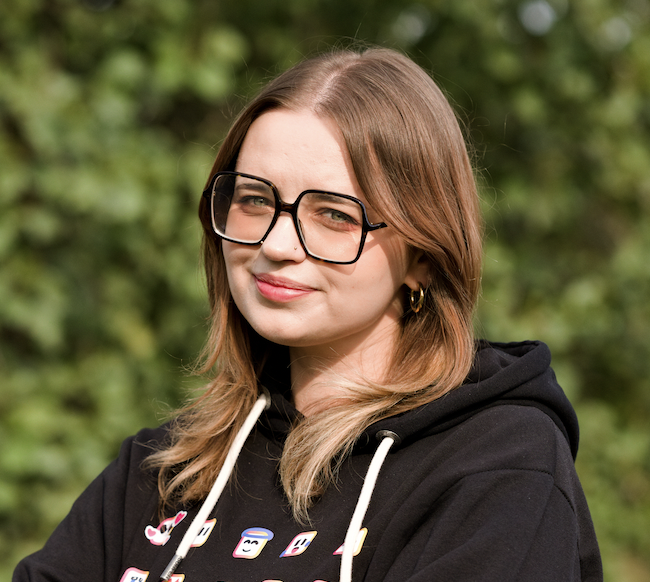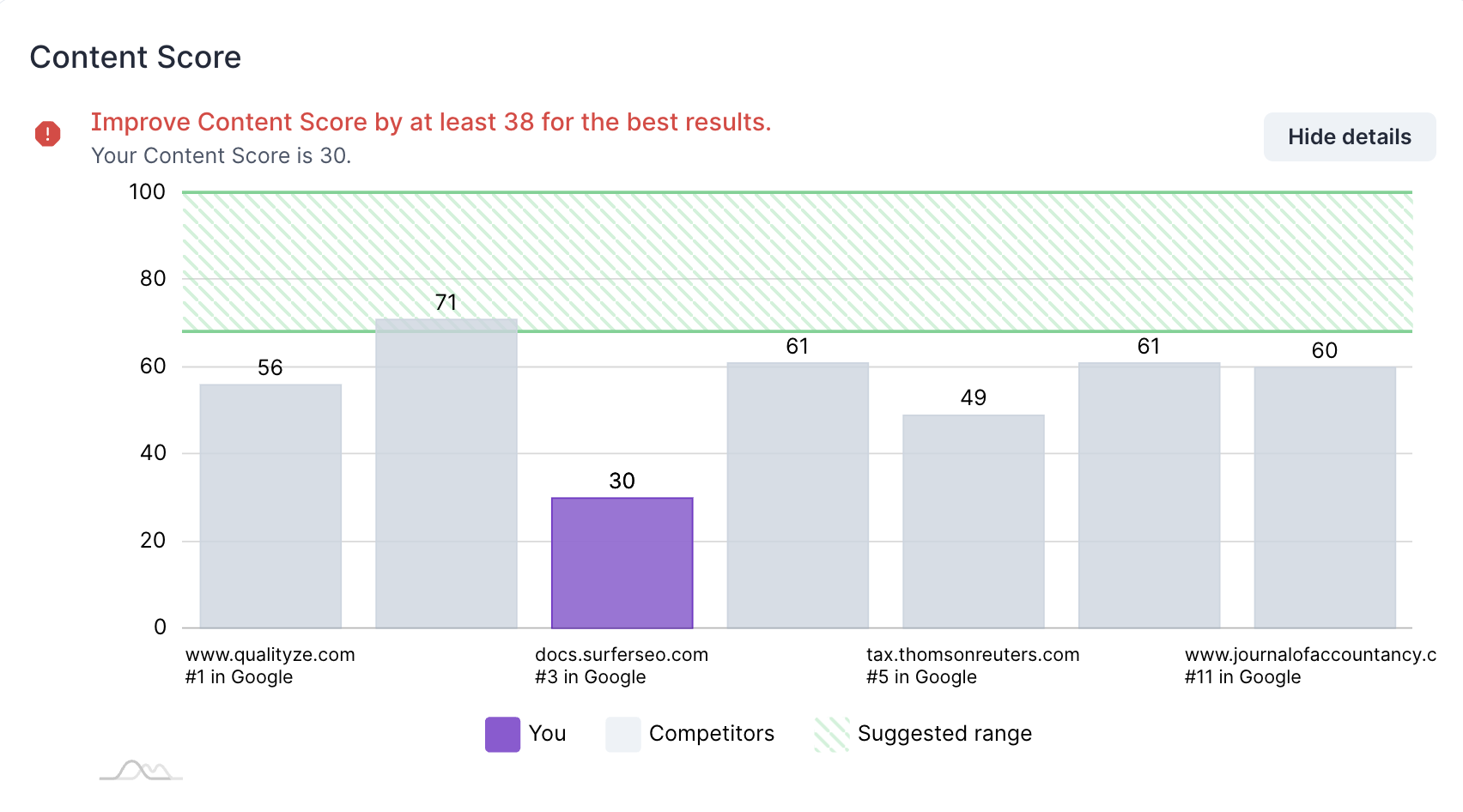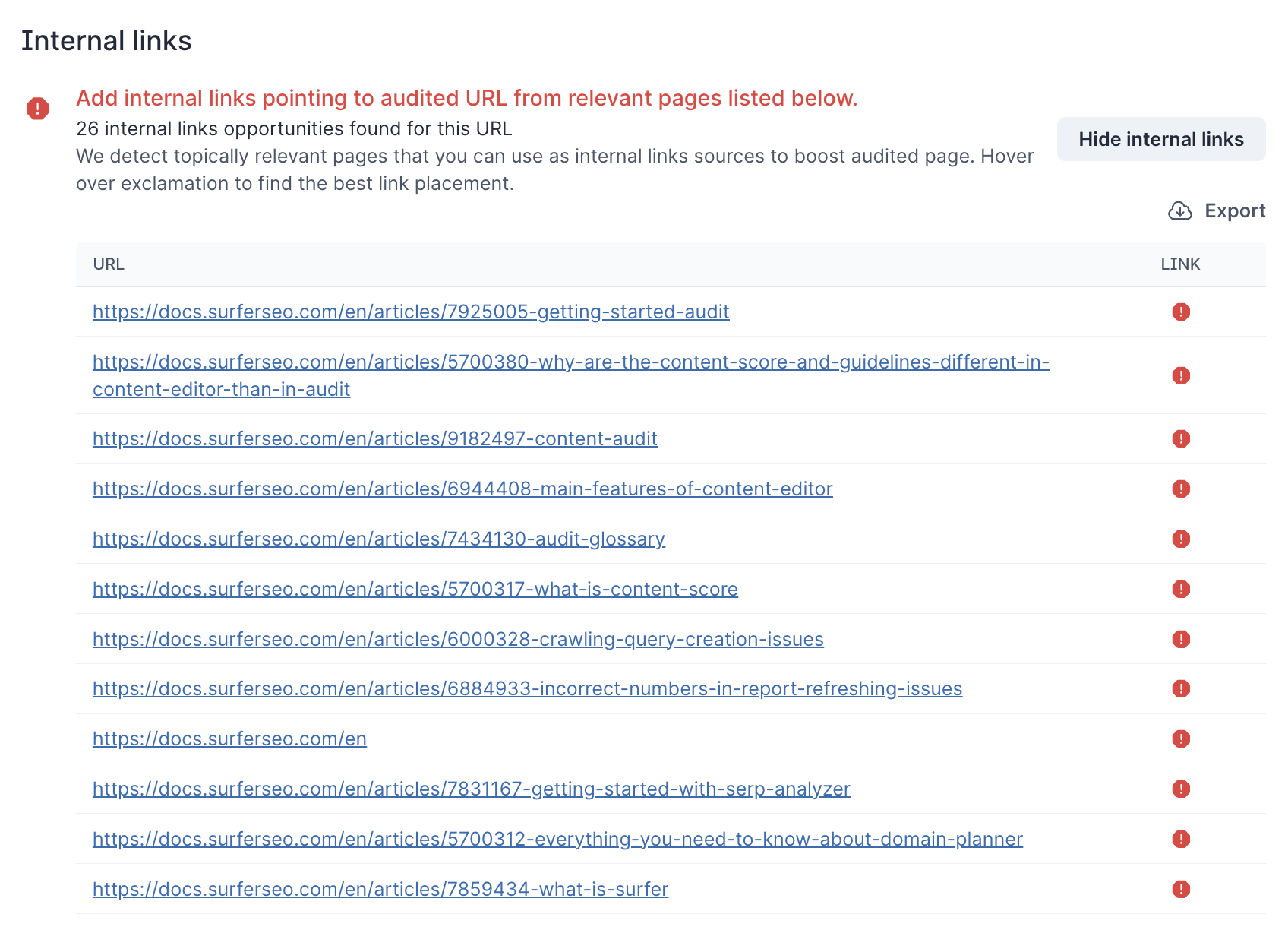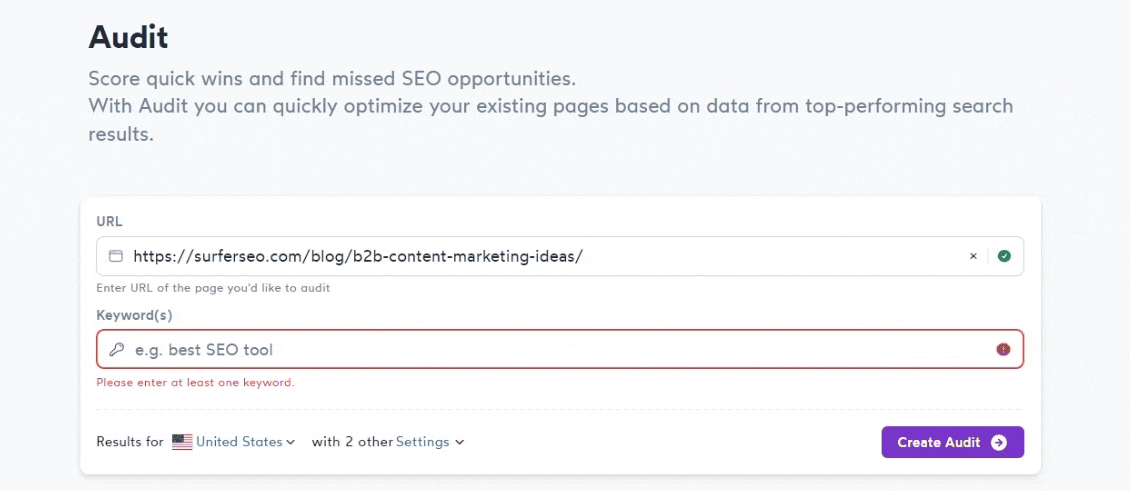
Scrolling down your Audit report, you will see a few sections. Each one of these sections corresponds to a specific part of your page that we've analyzed.
The analysis is enhanced with recommended ranges that are 100% based on your selected competitors.
Every section is filled with suggestions for you to follow. We may ask you to add or remove a specific term, build up your internal linking net, decrease the number of words on your page, increase the number of images, and more. That solely depends on the way your and your competitors' pages are built.
Let's take a look at each section in your Audit so you can understand it better and apply the suggestions when improving your page.
In the Audit, we provide a content score by comparing your page against your top competitors. This score is determined through an in-depth analysis of your page’s content, taking into account everything within the <body> tags of your source code, such as the navigation bar, footer, menus, and comments. As a result, the data can vary and impact your final score. The analysis evaluates both the written content and the surrounding elements on your webpage. For your Audit, your recommendations will be based on the current word count of your page.

In this section, you will see internal linking suggestions designed to guide your audience from one of the recommended pages to your Audited page. The important thing to remember is that: the URL of the Audited page should be included on the recommended page, not the other way around. This is because internal links from this section are meant to redirect users from one of the suggested pages to the Audited page.

The terms-to-use suggestions are based on the number of words on your Audited page and adjusted accordingly. Powered by our AI algorithms, following these suggestions will have the greatest impact on your rankings. This section will tell you exactly which words and phrases you should include, what’s missing, and the recommended ranges based on your competitors. For the suggested number of occurrences, we calculate the average word density from your competitors’ pages and adjust it to fit your current word count.

Simply put, this section shows you a list of suggested changes to adjust the overall length of your article or specific sections.

The exact keyword will be the term you used when creating your Audit query, together with your targeted location, and the page URL you will be auditing. In this example, the exact keyword is "b2b content marketing".

In this section, you'll see how often your competitors use this keyword on their pages, along with suggestions based on best practices, such as including at least one exact keyword in your title or H1.

Partial keywords are counted when the first three letters of a word in your content match the first three letters of the exact keyword. For example, if the main keyword is "b2b content marketing," partial keywords would include words starting with "b2b," "con," and "mar."
This section shows you how to fill content gaps using partial keywords and where you can add them. While this may not be your top priority, we recommend focusing on keyword density first. However, using partial keywords can still help optimize your content.
By applying this strategy, you can naturally add variations that competitors are using, saving you time and effort. It also makes your content flow better and improves the overall user experience.

Surfer will check how long your title and meta description elements are compared to those of your competitors. Here, we will give you tips to ensure you are meeting the SERP average length.

Did you know that Surfer can help you automate your meta title and description? Find out more about it here 💡
In this section, you can see the server response time and how long it takes for Surfer to load the first byte of your website. It's important to keep this time as low as possible.
Faster pages perform better, but keep in mind that this is a technical SEO factor. Surfer won’t provide specific optimization tips for this part of your site.

Our crawler will measure how long it takes for your page to load and compare it with the average load time of your competitors’ pages.
IMPORTANT NOTE: Since this is a technical SEO factor, Surfer won’t provide specific optimization tips for for this part of your domain.
If you want to learn more about Audit terminology, check out our Glossary 👇
Your webpage has a certain number of words, and the suggested range falls between two numbers. But how do we determine these ranges?
The lower limit is simple: it’s the average word count from your selected competitors in the Audit.
The upper limit is a bit more complex. We look at your competitors and find the one with the most occurrences of that element. Then, we add 10-15% to that number to set the upper limit.
You will need to apply the suggestions in your own website editor directly to your page and make sure that the changes are live.
To track your progress, you can use the refresh button, which is explained in more detail in the next section of this article.
Make sure to implement only those suggestions that make sense in your case. Since Surfer's guidelines are based on the URLs you picked, it could be that some of the terms wouldn't fit the content on your website.
The suggestions follow a similar format: "Your webpage has x words, and the suggested range is between a and b."
When your Audit is running, Surfer crawls both your page and your competitors’ pages. To help you track your progress, we’ve added a Refresh button. Instead of running a new query each time, you can click the Refresh button to re-crawl your page and see the updates.
Within a few minutes, your suggestions will reflect the changes you’ve made since your initial query.

❗IMPORTANT NOTE: refreshing the Audit will only re-crawl your page, not your competitors' pages. If you want Surfer to crawl the entire SERP again for your targeted keyword, you’ll need to run a new query.
Audit does not detect my changes / Refreshing is not working 😢
If you see this message next to your URL, you’re probably wondering what it means.
To explain, we run a special search (site:your-keyword) to check if Google considers this URL the most relevant for that topic. Based on the search results, we will suggest and point out a more relevant URL, so you will be seeing this message prompt next to your Audited URL.
Should something be done, then? We trust your expertise, so you can ignore it if you feel it’s not an issue.

Do you still need help? Don't worry! You can contact us at [email protected] or via live chat by clicking the icon in the bottom-right corner.